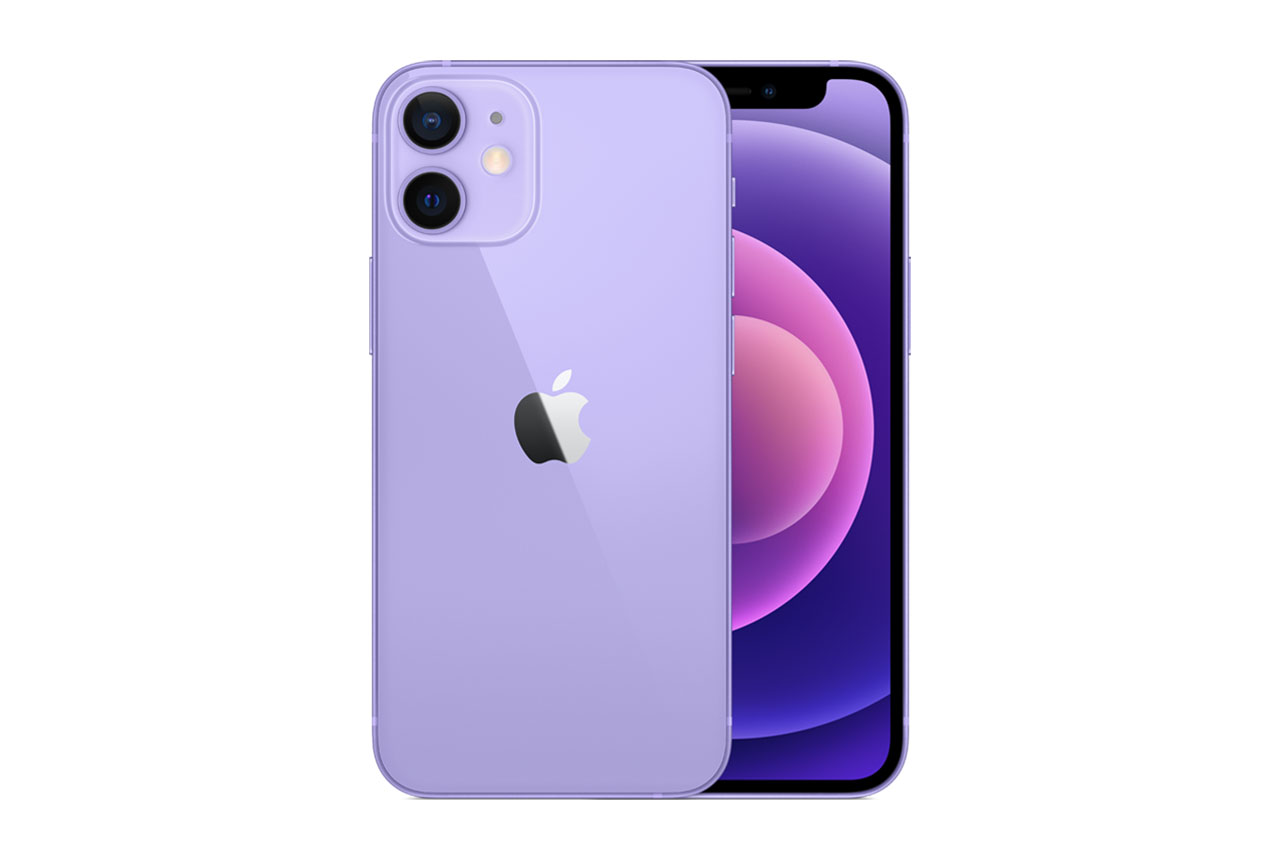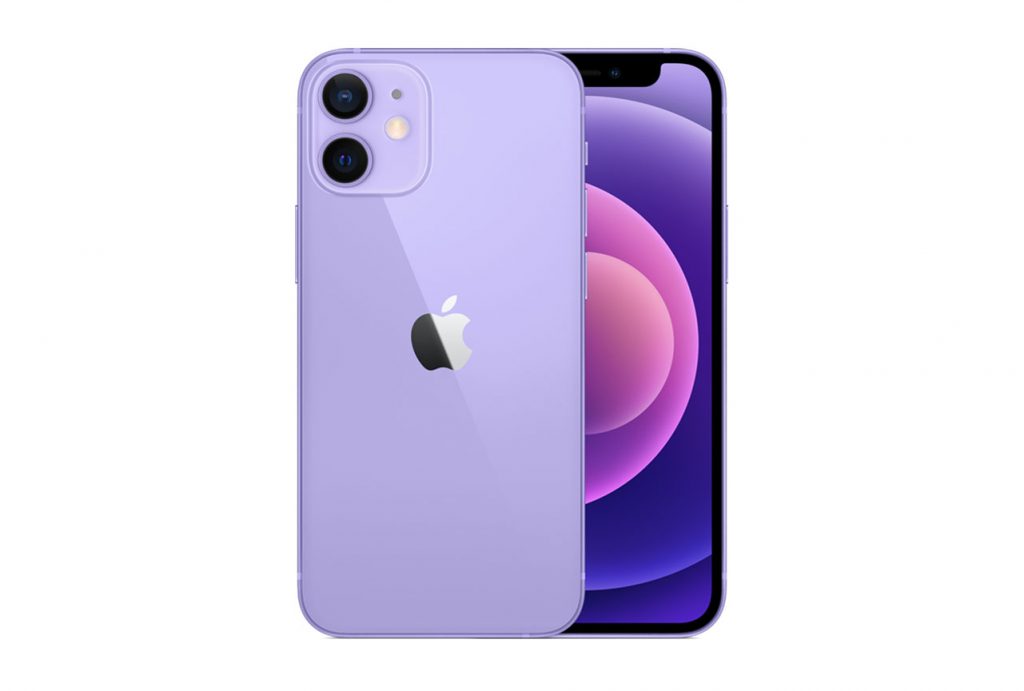Apple introduced the iPhone 12 mini in October 2020. With a price that places it in our Premium segment ($600-799), the iPhone 12 mini, despite its diminutive size, comes packed with such features as a high-resolution Super Retina XDR display and a dual-camera setup. Our Battery protocol engineers recently tested the Apple iPhone 12 mini; we report their key findings below.
Key specifications:
- Battery capacity: 2227 mAh
- 20W charger (not included)
- Chipset: A14 Bionic
- 5.4-inch, 2340 x 1080 (476 ppi), 60 Hz OLED display
- Tested RAM / storage combination: 4 GB / 128 GB
- Supports wireless charging (12W)
About DXOMARK Battery tests: For scoring and analysis in our smartphone battery reviews, DXOMARK engineers perform a variety of objective tests over a week-long period both indoors and outdoors. This article highlights the most important results of our testing. (See our introductory and how we test articles for more details about our smartphone Battery protocol.)
Test summary
Scoring
Sub-scores and attributes included in the calculations of the global score.

Apple iPhone 12 mini


Key performances
These key points are derived from the lab measurements during testing and do not figure into the overall score. The lab measurements, however, are used for the overall score.
 183rd
183rd
 36th
36th
Pros
- Battery discharge is extremely efficient, thanks to excellent software optimization.
- Supports wireless charging that is comparable to wired charging.
Cons
- Battery size is very small (2227 mAh), which severely impacts autonomy.
- Despite being able to use a 20W charger, the device’s battery is slow to charge.
The Apple iPhone 12 mini is aptly named, given its overall dimensions — and also given its battery capacity, which at 2227 mAh is far and away the smallest in our entire Battery database as of this writing. However, even though its battery size has a significant impact on its autonomy, its overall Battery score of 59 puts it ahead of several other devices with much larger batteries.
We compared the Apple iPhone 12 mini’s performance in several key categories with another Premium device, the Google Pixel 5, and with a smartphone from our High-End ($400-599) segment, the OnePlus 8T; battery capacity, charger, display type and resolution, and processor specifications for all three devices are shown in the table below.
| Apple iPhone 12 mini | Google Pixel 5 | OnePlus 8T | |
| Battery capacity (mAh) | 2227 | 4080 | 4500 |
| Charger | 20W | 18W | 65W |
| Wireless | 12W | 12W | No |
| Display type | OLED | OLED | OLED |
| Resolution, max refresh rate | 2340 x 1080, 60 Hz | 2340 x 1080, 90 Hz | 2400 x 1080, 120 Hz |
| Processor | A14 Bionic (5 nm) | Qualcomm Snapdragon 765G (7 nm) | Qualcomm Snapdragon 865 (7 nm) |
How long a battery charge lasts depends not only on battery capacity, but also other aspects of the phone’s hardware and software. The DXOMARK Battery autonomy score is composed of three performance sub-scores: (1) Stationary, (2) On the go, and (3) Calibrated use cases. Each sub-score comprises the results of a comprehensive range of tests for measuring autonomy in all kinds of real-life scenarios.
Autonomy (41)
Put bluntly, at this writing, the Apple iPhone 12 mini’s overall Autonomy score of 41 is very close to last place in our database, with the stark difference between its battery capacity (2227 mAh) and that of the Google Pixel 5 (4080 mAh) and the OnePlus 8T (4500 mAh) making it hard to compete with them.
It is worth noting that when the iPhone 12 mini’s battery indicator says 10%, it really does mean 10%, so users won’t experience a precipitous drop in time left as the phone heads towards empty. (This is good behavior that quite a number of other phones don’t exhibit.)
Now let’s take a closer look how the mini’s battery fared in our autonomy tests.

Stationary
Apple iPhone 12 mini
44
104
A robot housed in a Faraday cage performs a set of touch-based user actions during what we call our “typical usage scenario” (TUS) — making calls, video streaming, etc. — 4 hours of active use over the course of a 16-hour period, plus 8 hours of “sleep.” The robot repeats this set of actions every day until the device runs out of power.
Despite the difference in battery capacity, the Apple iPhone 12 mini is not too terribly behind the comparison devices, with its moderate-use autonomy only about 4 hours less than the Google and OnePlus devices. The graph below shows how the Apple iPhone 12 mini’ and its rivals performed in our robot-driven typical usage scenario:

On the go
Apple iPhone 12 mini
51
96
Using a smartphone on the go takes a toll on autonomy because of extra “hidden” demands, such as the continuous signaling associated with cellphone network selection, for example. DXOMARK Battery experts take the phone outside and perform a precisely defined set of activities while following the same three-hour travel itinerary for each device.
At 51 points, the Apple iPhone 12 mini’s on the go performance is similar to that of the Pixel 5 (also 51 points), with both devices significantly behind the OnePlus (61 points). As for individual use cases, the OnePlus leaves both the Apple and Google devices in the dust when it comes to 3G calling, though the two come a bit closer to the OnePlus in both camera and GPS (and the Google almost matches the OnePlus’s performance for social apps).

Calibrated
Apple iPhone 12 mini
42
100
For this series of tests, the smartphone returns to the Faraday cage and our robots repeatedly perform actions linked to specific sets of activities (use cases) such as gaming, streaming, etc.
When the Apple iPhone 12 mini is not in its default auto mode, but rather in calibrated mode (screen at 200 nits and speaker at 60 db), it simply cannot compete with its review rivals and comes in behind them both in all tests. That said, it is worth noting that Apple claims the mini will provide 10 hours of video streaming autonomy, and indeed, when averaged out, the iPhone surpasses that number in calibrated mode, reaching 13 hours of streaming via WiFi and 8 hours 30 minutes via 4G.
Charging (73)
The DXOMARK Battery charging score is composed of two sub-scores, charging speed and quick power boost. Full charge tests assess the reliability of the battery power gauge; measure how long it takes to charge a battery from 0% to 80% capacity and from 80% to 100%; and measure how long and how much power the battery takes to go from an indicated 100% to an actual full charge. With the phone at different charge levels (20%, 40%, 60%, 80%), Quick boost tests measure the amount of charge the battery receives after being plugged in for 5 minutes.
The Apple iPhone 12 mini put in a slightly below-average charging performance. With such a small battery and a 20W charger, it would not unreasonable to expect the iPhone to charge fairly quickly; instead, its performance was similar to that of the Google Pixel 5 with its 4080 mAh battery and 18W charger.

Full charge
Apple iPhone 12 mini
78
121
Though the iPhone 12 mini took twice as long as the OnePlus 8T to go from empty to an 80% charge (nearly 52 minutes vs. 25 minutes), the Apple device beat the Google, which took 1 hour 14 minutes to arrive at 80%. Further, although the iPhone took longer than both the Google and the OnePlus to go from 80% to an indicated 100%, and longer than the OnePlus to go from 100% to completely full, the Apple device soundly beat the Pixel 5 when going from 100% to completely full.
As for wireless charging, at 12W, it takes the iPhone 12 Mini 1 hour and 36 minutes to reach 80% (vs. 52 minutes for wired charging) — which all in all is not bad.

Quick boost
Apple iPhone 12 mini
66
111
How much power the Apple iPhone 12 mini has left has an impact on how much additional autonomy a user will get from plugging the device in for five minutes. Plugged in with 20% left, the Apple gets more than twice as much time as when plugged in with 80% power remaining. While these results are similar to those for the Google Pixel 5, the OnePlus 8T provides approximately twice as much additional autonomy across the board than the other two devices for a five-minute charge.
| Apple iPhone 12 mini | Google Pixel 5 | OnePlus 8T | ||
| Autonomy boost (hh:mm) | 20% | 2:43 | 2:16 | 5:42 |
| 40% | 2:31 | 2:16 | 5:17 | |
| 60% | 1:53 | 1:46 | 4:22 | |
| 80% | 1:20 | 1:13 | 2:30 | |
| Percentage boost | 20% | 9.5 % | 6.9 % | 17.9 % |
| 40% | 8.8 % | 6.9 % | 16.6 % | |
| 60% | 6.6 % | 5.4 % | 13.7 % | |
| 80% | 4.7 % | 3.7 % | 7.8 % | |
| Energy consumed | 20% | 1205 mWh | 1654 mWh | 3847 mWh |
| 40% | 1119 mWh | 1656 mWh | 3565 mWh | |
| 60% | 838 mWh | 1294 mWh | 2941 mWh | |
| 80% | 591 mWh | 894 mWh | 1685 mWh |
Efficiency (100)
The DXOMARK power efficiency score consists of two sub-scores, Charge up and Discharge, both of which combine data obtained during robot-based typical usage scenario testing, outdoor mobility testing, charging evaluation, and power measurements, and then take into consideration the device’s battery capacity.
While its measured times for autonomy cannot compete with most devices with larger batteries, it is nonetheless true that when taking into account its small battery size, the Apple iPhone 12 mini shows good autonomy (which translates here as excellent discharge efficiency).

Charge up
Apple iPhone 12 mini
57
105
While the Apple iPhone 12 mini’s charging efficiency of 68% just tops that of the Google Pixel 5 (66%), it is rather a ways behind that of the OnePlus 8T (81%). Again, its low score here is attributable to its unexpectedly inefficient charger.
The Apple iPhone 12 mini put in what our engineers described as an “amazing performance” in all discharge tests except in 3G calling. In default mode, the amount of current it discharges is close to only half of the amount discharged by its rivals, attesting to its being a well-designed smartphone and earning it the top score in our database for this sub-attribute so far.
Conclusion
The Apple iPhone 12 mini is a very well-designed smartphone, with very effective software optimization that makes its battery the current leader in discharge efficiency across our entire database to date. That said, its very small battery does translate into significantly shorter autonomy than nearly all other devices tested thus far.




DXOMARK encourages its readers to share comments on the articles. To read or post comments, Disqus cookies are required. Change your Cookies Preferences and read more about our Comment Policy.